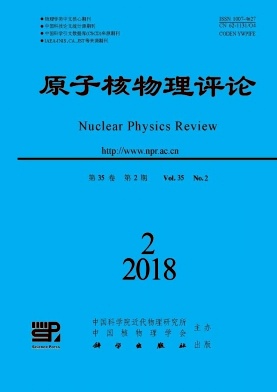|
[1]
|
YANG Jiancheng, XIA Jiawen, XIAO Guoqing, et al. Nucl Instr Meth B, 2013, 317:263. |
|
[2]
|
WILLIAMS W S C. Nuclear and Particle Physics[M]. Oxford:Oxford University Press, 1991:120. |
|
[3]
|
STRASIK I. MUSTAFIN E, FERTMAN A, et al. Nucl Instr Meth B, 2008, 266(15):3443. |
|
[4]
|
MAGISTRIS M, SILARI M. Nucl Instr Meth A, 2006, 562(2):935. |
|
[5]
|
SULLIVAN A H. A Guide to Radiation and Radioactivity Levels Near High Energy Particle Accelerators[M]. Ashford, Kent, United Kingdom:Nuclear Technology Publishing, 1992:93. |
|
[6]
|
WU Qingbiao, WANG Qingbin, WU Jingmin, et al. Chinese Physics C, 2011, 35(6):596. |
|
[7]
|
WU Qingbiao, WANG Qingbin, LIANG Tianjiao, et al. Applied Radiation Isotopes, 2016, 115:235. |
|
[8]
|
JU, Y Q, ZHANG X Y, MA F, et al. Journal of Physics G:Nuclear and Particle Physics, 2015, 42(12):125102. |
|
[9]
|
THOMAS R H. NCRP Report No.144[R]. Maryland, American:National Council on Radiation Protection and Measurements, 2003. |
|
[10]
|
BOHLEN T T, CERUTTI F, CHIN M P W, et al. Nuclear Data Sheets, 2014, 120:211. |
|
[11]
|
FERRARI A, RANFT J, ROESLER S, et al. Zeitschrift fur Physik C:Particle Fields, 1996, 70:413. |
|
[12]
|
http://www.srim.org/. |
|
[13]
|
http://web-docs.gsi.de/~aprochaz/webatima. |
|
[14]
|
Ministry of Ecology and Environment of the People's Republic of China. Radioactive waste classification[S]. Beijing:National Standard of People's Republic of China, 2018. (in Chinese) (中华人民共和国生态环境部. 放射性废物分类[S]. 北京:中国标准出版社, 2018.) |
|
[15]
|
Standards Press of the People's Republic of China, GB5172-85, Particle Accelerator Radiation Protection Regulations[S]. Beijing:National Standard of People's Republic of China. 1985. (in Chinese) (国家标准局. GB5172-85粒子加速器辐射防护规定[S]. 北京:中国标准出版社, 1985.) |
|
[16]
|
General Administration of Quality Supervision, Inspection and Quar-antine of the People's Republic of China, GB 18871-2002, Basic Standards for Protection against Ion-izing Ra-diation and for the Safety of Radiation Sources[S]. Beijing:Standards Press of the People's Republic of China, 2002. (in Chinese) (中华人民共和国国家质量监督检验检疫总局. GB18871-2002电离辐射防护与辐射源安全基本标准[S]. 北京:中国标准出版社, 2002.) |






 甘公网安备 62010202000723号
甘公网安备 62010202000723号 DownLoad:
DownLoad: